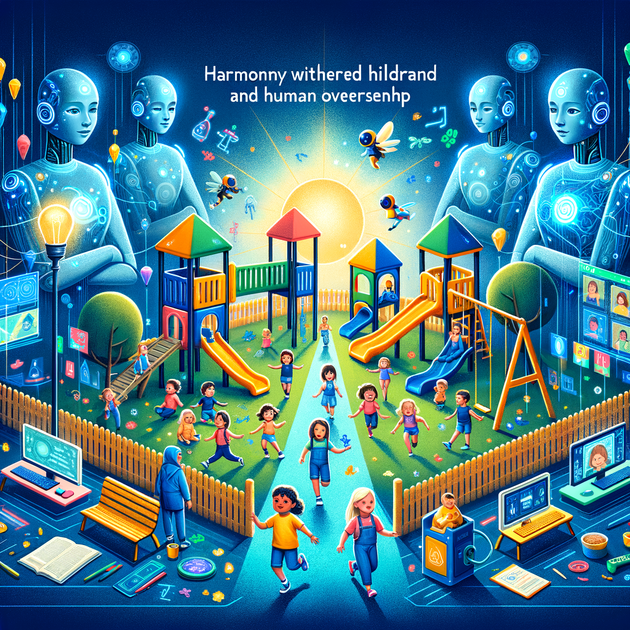How AI and Human Oversight are Revolutionizing Child Safety
Imagine a world where the digital playground is as safe as your own backyard. The synergy between Artificial Intelligence (AI) and human oversight is making this a reality by bringing forth robust child safety solutions that address modern-age threats like cyberbullying, online predators, and unsafe environments. This article delves deep into how AI, coupled with human expertise, is creating trustworthy safety ecosystems for children.
The Promise of AI in Child Safety
AI’s unparalleled capabilities in data processing, pattern recognition, and real-time analysis provide a watchful eye that continuously monitors children’s activities. Below, we explore how AI can be the vigilant guardian we all need:
- Monitoring Online Interactions: AI algorithms can scan text and multimedia exchanges on gaming platforms and social media to detect signs of cyberbullying or predatory behavior. Once a threat is identified, alerts are sent to parents and guardians, preemptively addressing harmful situations.
- Geofencing and Location Tracking: By using AI applications for location monitoring, parents receive real-time updates. If children venture into dangerous zones, immediate alerts ensure quick intervention.

Ron Kerbs, CEO and Founder of Kidas
The Necessity of Human Oversight
Despite its strengths, AI is not infallible. Human experts complement AI capabilities to provide contextual and nuanced understanding. Such collaboration minimizes false positives and ensures ethical interventions:
Reviewing AI Alerts: When AI systems flag potential issues, human judgment solidifies the accuracy of these findings. For instance, if AI identifies gaming communications as potentially harmful, human experts can review the context to determine whether it warrants an escalation.
Human oversight also ensures the ethical application of AI findings. Experts can adapt AI recommendations to fit the real-life needs of each child, offering a personalized, balanced approach to safety.
Building Trust through Transparency and Education
Trust is paramount when implementing AI in child safety. For it to be effective, stakeholders—be it parents, educators, or children—must have confidence in these systems. Here are key elements to build this trust:
- Transparency: Clear communication about data collection, usage, and privacy measures helps in understanding how AI systems work. Providing detailed information on algorithmic decisions and potential biases aids in this trust-building process.
- Education: Ongoing educational initiatives should focus on demystifying AI, making complex technologies accessible and understandable to non-experts. Educating parents and children about the strengths and limitations of AI fosters a collaborative safety approach.
Moreover, given the sensitivity of children’s data, ethical considerations surrounding data privacy are crucial. Adhering to robust data protection standards ensures that data is minimal, encrypted, and securely managed.
Example: ProtectMe by Kidas employs AI to monitor online gaming communications, flagging potential cyberbullying, suicidal ideation, and predator activity. Parents receive actionable alerts, allowing a balanced and proactive safety approach.
The Future of AI in Child Safety
With advancements in machine learning, natural language processing, and biometric technologies, AI systems are becoming more sophisticated. Nevertheless, the indispensable role of human oversight will continue to ensure these technologies serve to enhance human judgment, not replace it.
Future developments will likely see a collaborative AI ecosystem involving children as active participants in their safety journey. Through education and empowerment, they will learn to navigate the digital world safely, contributing to a holistic safety environment.
The intersection of AI and human oversight offers transformative opportunities for safeguarding children. By integrating the strengths of both, we can create ethical, transparent, and effective safety solutions. As we continue to navigate the complexities of the digital age, this collaborative approach will be essential for ensuring a safer future for our most vulnerable.
